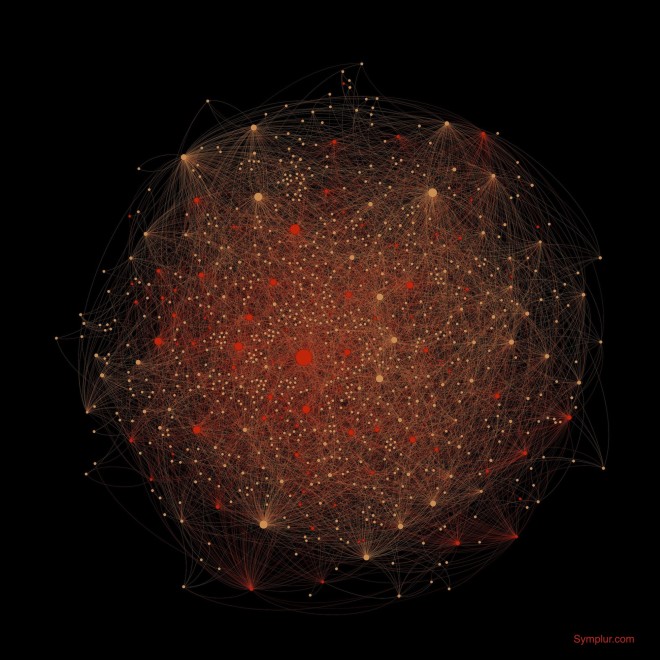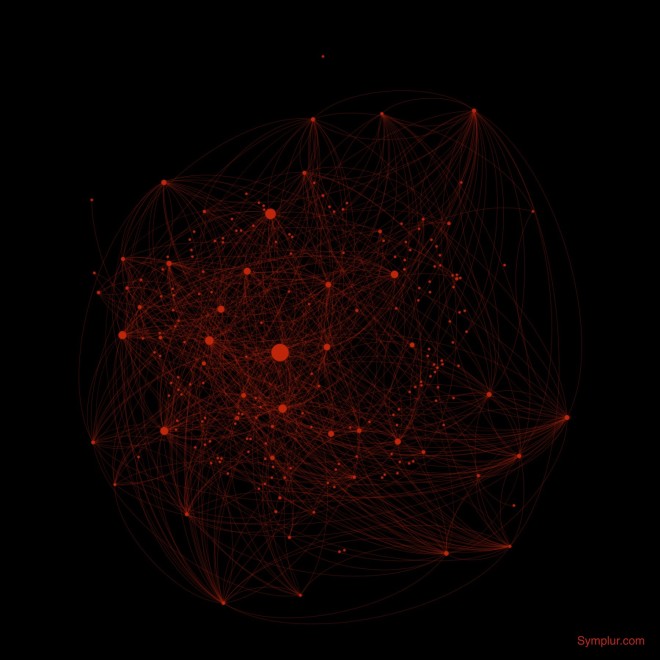If you’ve been to a healthcare conference lately, you probably had a moment where you sat down in the main stage room and looked around in order to size up the audience. You may have silently concluded “at least 200” or “I can’t believe they managed to fit 1,000 in here”. Either way, you were wrong.
The audience for healthcare conferences has evolved…like crazy. We need to make a distinction between physical attendees (those in the room) and the whole audience. For some leading conferences, the true audience is many times larger than the number of physical attendees. Social media, and especially Twitter, is driving this conference participation disruption.
We have been tracking the social media engagement of over 1,600 healthcare conferences world wide over the last 3 years. And while we have pointed to this change in the past, we would like to provide another data set that communicates this well.
Visualizing the Data – A look at Stanford University’s Medicine X
A leading healthcare conference like Medicine X at Stanford University is a great case study in where the industry is headed. Let’s look at last year’s conference. In 2012, Medicine X had about 500 attendees, while the complete number of social participants were 1,331. For more data from last year’s conference take a look at the infographic we created together with Medicine X.
The network graph below shows those of the attendees physically in the room that participated in the social conversation via Twitter.
In the network graph below we have augmented the data set to show the complete social audience, both those who were physically there (still in red) and those who participated in the social conversation from anywhere in the world (in orange).

Not only is the number of people participating in the social conversation many times larger than the number of people physically present, but the number of links between these nodes is also exponentially larger, not to mention the number of people reached with these messages.
Understanding the true audience will change the way speakers, organizers, sponsors and attendees think about healthcare conferences.


4 Responses to “The True Audience of Healthcare Conferences – It’s not what you think”
Mark Harmel
As someone that was a yellow dot participating in the conference via the webcast I understand the additional reach of the conference. I wonder though how you tell the difference between the people in the room and the ones outside. Is there a way to search by location of the Tweet?
Audun Utengen, MBA
Thanks for your comment Mark!
We got the list of Twitter handles of the attendees from the conference organizers. They ask for this during the registration process. That’s how we could fairly accurately visualize who was present at the conference and who was participating from somewhere else.
Susannah Fox
I have an even deeper appreciation for Symplur after my experiences over the last two weeks, traveling and attending a string of health conferences, including #medx.
I usually have time to respond to tweets on the fly and capture insights in between events. This time, however, I gave 5 different speeches in the space of 10 days and found that I could not keep up with the community’s response. Some people might not see that as a tragic situation — move on, keep going. But being a community colleague is a core piece of who I am and how I do my research, so the loss of those tweets felt like a loss of my work product.
Symplur to the rescue! I have been able to access the transcripts of two of the events I attended — #medx and #health2con — and begin to capture the insights shared, such as in this Storify:
http://storify.com/SusannahFox/master-class-on-participatory-research
And:
http://storify.com/SusannahFox/unmentionables-2013
So thank you, for all that you are doing for the health geek community!
Audun Utengen, MBA
Thank you for your kind words Susannah!
Some of these conferences sure create a whirlwind on Twitter. I’m grateful that you and others invest your time and understanding to highlight some of the best from these tweet streams. I find myself always in need of and depending on other people’s curation.
The half-life of a tweet is probably measured in seconds, but some of these tweets deserves to last and not to be forgotten. Storify is great for that. And that Symplur and the transcripts could assist is just a bonus!